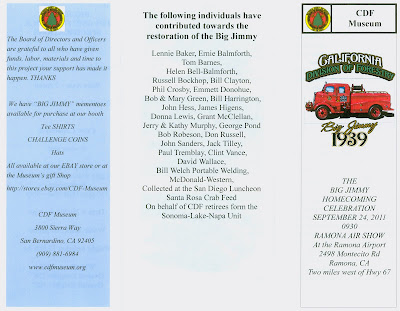The extreme fire hazard that exists across San Bernardino County and the Inland Empire grows in potential with the arrival of the Santa Ana winds. The “Devil Winds” as they are known, race through Southern California primarily during the months of October through December. However, it is not unusual to experience Santa Ana winds as early as September or as late as February the next year.
Many of Southern California’s most disastrous fires have been driven by strong, dry Santa Ana winds. This includes the Panorama fire of November 1980 that destroyed 345 structures and killed four people, the 2003 Grand Prix and Old fires and the deadly Esparanza fire that killed five U.S. Forest Service firefighters.
CAL FIRE San Bernardino Unit Chief Tim McClelland says “fire safety needs to be on the mind of all the residents of San Bernardino County and the Inland Empire, especially those who live and recreate in the mountains and wildland areas”. Residents in the urban intermix and wildland areas need to maintain a fire safe clearance of a minimum of 100 feet around all structures or to the property line.” Even if you did your clearance in the spring, you should give the property a once over so that you have good defensible space around your structures. This defensible space provides firefighters the area they need in many instances to mount an effective defense of your home such as we witnessed during the recent Hill fire in the Oak Hills area of the High Desert. Fire officials credit the residents of the area for being proactive in keeping their properties clear and defendable.
According to weather experts, the Santa Ana wind cycle begins when high pressure from the northeast pushes the hot dry winds into Southern California. These winds can reach average speeds of 35 to 45 miles per hour but can accelerate to hurricane speeds such as the winds in 2007 that reached recorded gusts of 111 miles per hour. These wind speeds equate to a category two hurricane. The racing winds, dry weather, and low humidity combine to create a prescription for disaster. In 2003 the Santa Ana winds drove fires that destroyed nearly three quarters of a million acres across Southern California. Again in 2007, the winds drove flames across 426,000 acres.
Another reason that makes the Santa Ana winds so dangerous is their appeal to arsonists. The hot and dry vegetation beckons to the destructive tendencies of an arsonist like we saw in August of 2009 in the Oak Glen III fire which was arson caused and burned more than 1,000 acres and destroyed one residential structure. With this in mind Chief McClelland says “it is very important for residents everywhere especially in the mountain and wildland areas to pay attention to suspicious actions. If you see something suspicious or a person acting suspiciously report it to CAL FIRE, your local fire department or law enforcement agency”.
The 1994 “One Strike for Arson” law punishes any person who willfully, maliciously, deliberately, with premeditation and with specific intent, sets fire to, burns, or causes to be burned, any residence, structure, forest land or property. That person when convicted is guilty of aggravated arson. According to this law, if any one or more of the specified aggravated factors exists, the person convicted SHALL not be eligible for probation and SHALL be imprisoned in state prison for ten years to life.
As we have seen in the last few weeks, the vegetation across Southern California is tinder dry and with low humidity and high winds, very susceptible to ignition. Almost any type of heat source can start a fire in these conditions. If you see a fire, no matter what size, report it to the nearest fire department or call “911”. Please do not assume that another person made the call. The quicker the public reports a fire, the faster firefighters can respond. Remember, that if you have information about how a fire started, report it to the fire department or law enforcement.
CAL FIRE Fire Prevention Battalion Chief Preston Fouts says “preventing fires is everyone’s business. If we work together, we can keep our homes and property, recreational areas and most of all our loved ones safe from the ravages of wildfire”.







































